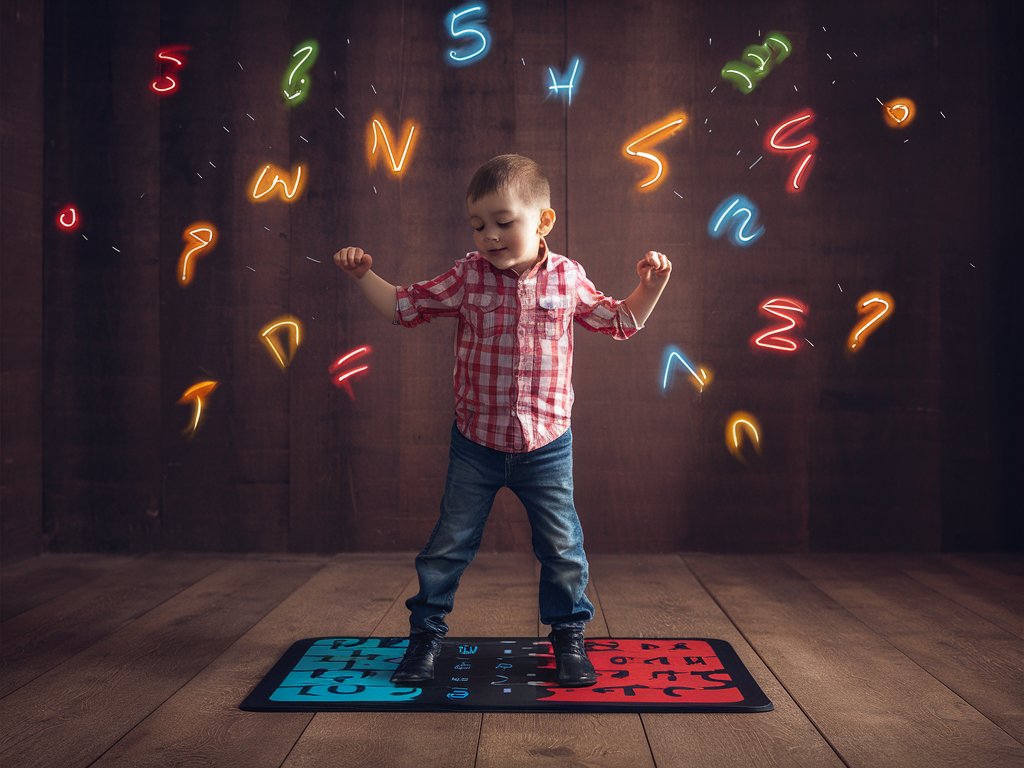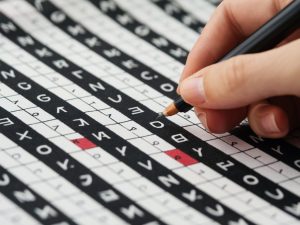In today’s digital age, efficient typing skills are a valuable asset. But for many, the traditional method of learning to type can feel tedious and unengaging. Enter dance mat typing, a revolutionary approach that transforms keyboard practice into an interactive and fun experience, especially for children.
This blog post delves into the world of dance mat typing, exploring its benefits, how it works, and its potential drawbacks. We’ll also provide tips on getting started and resources to help you or your child embark on this exciting typing journey.
How Does Dance Mat Typing Work?
Dance mat typing software utilizes a colorful interface that mimics a giant dance mat. Letters of the alphabet are displayed on the virtual mat, corresponding to specific areas a user needs to “step” on with their hands or feet. As instructions or words appear on the screen, users physically tap the corresponding keys on the actual keyboard, replicating the movement of stepping on the virtual mat.
This interactive method engages multiple senses – visual, auditory, and kinesthetic – making the learning process more engaging and memorable for children. Additionally, some programs incorporate music, sound effects, and reward systems to further enhance the fun factor and motivate users to keep practicing.
Also Read: Fast Food Operators and Chapter 11: Navigating Rough Waters
Benefits of Dance Mat Typing:
- Enhanced Learning: Studies have shown that dance mat typing can significantly improve typing speed and accuracy compared to traditional methods. The kinesthetic element helps children develop muscle memory for key placement, leading to faster and more efficient typing over time.
- Increased Motivation: The interactive and gamified nature of dance mat typing makes learning to type more enjoyable, especially for children with short attention spans. The fun factor keeps them engaged and motivated to continue practicing, ultimately leading to better results.
- Improved Hand-Eye Coordination: Dance mat typing requires users to coordinate their visual focus on the screen with their hand movements on the keyboard. This constant focus and coordination helps develop and refine hand-eye coordination, a valuable skill not just for typing but also for other activities.
- Early Development of Typing Skills: Dance mat typing can be a great introduction to typing for children as young as four or five years old. The large, colorful interface and interactive elements make it accessible for young learners, allowing them to develop basic typing skills at an early age.
- Fun for All Ages: While primarily targeted towards children, they can be a fun and engaging way for adults to learn to type as well. It’s a refreshing alternative to traditional typing software and can be a great way to improve typing skills in a less monotonous way.
Potential Drawbacks of Dance Mat Typing:
- Limited Portability: Most dance mat programs require a physical computer setup with a keyboard and a large enough space to accommodate the “stepping” motions. This can limit its portability compared to online typing programs.
- Focus on Home Row Keys: Some dances mat typing programs might primarily focus on teaching the home row keys, which are the keys closest to the base of the fingers on the keyboard. While important, this might not cover all the keys needed for efficient typing.
- Transition to Traditional Typing: There might be a slight learning curve when transitioning from dance mat typing to traditional typing without the visual cues on the mat. This could require additional practice to fully adapt to standard keyboard layouts.
Getting Started with Dance Mat Typing:
- Choose a Program: Several dance typing programs are available online, both free and paid. Choose a program with features that suit your needs and age group. Look for programs with clear instructions, adjustable difficulty levels, and engaging gameplay elements.
- Set Up Your Workspace: Ensure you have a clear workspace with enough space to move comfortably when “stepping” on the virtual mat. Make sure your child is sitting comfortably with proper posture at the keyboard.
- Start Slow and Gradually Increase Difficulty: Begin with basic exercises focusing on home row keys and gradually introduce new keys as proficiency increases.
- Practice Regularly: Consistent practice is key to mastering typing skills. Encourage short, regular practice sessions to ensure steady improvement.
- Make it Fun!: Embrace the fun and interactive nature of dance typing. Celebrate achievements and encourage your child’s progress to keep them motivated.
Dance Mat Typing Resources:
Here are some resources to help you get started with dance typing:
- KidzType: https://www.kidztype.com/
- BBC Dance Mat Typing (no longer available but historical reference): https://www.bbc.co.uk/bitesize/articles/z3c6tfr (This program is no longer available, but it can serve as a historical reference point)
Conclusion:
They offers a refreshing and engaging approach to learning to type. By incorporating fun and interactive elements, it can significantly improve typing speed, accuracy, and hand-eye coordination, especially for children. However, it’s important to consider the potential drawbacks, such as limited portability and focus on specific key sets.
They can be a valuable tool to kickstart your typing journey or your child’s. By choosing the right program, creating a fun and supportive learning environment, and practicing consistently, you can unlock the benefits of efficient typing skills in a way that’s both enjoyable and effective.







